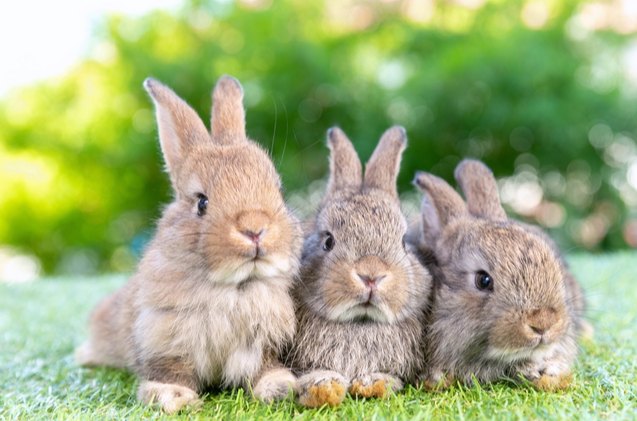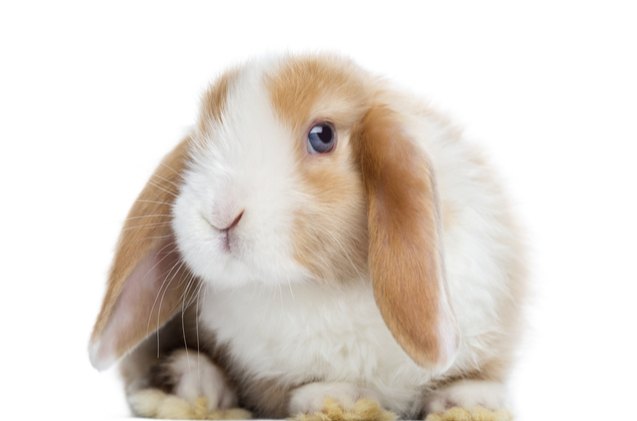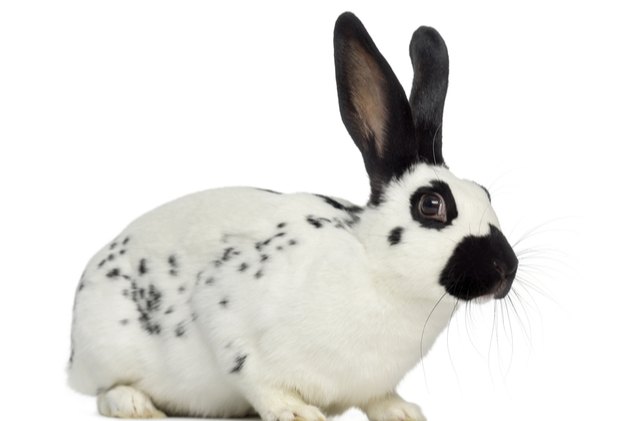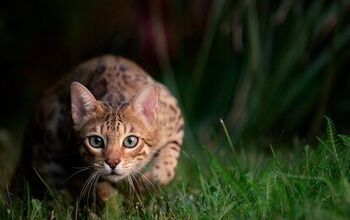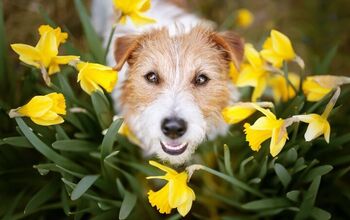10 Best Rabbits for Pets

The American Rabbit Breeders Association recognizes 50 unique rabbit breeds, but there are over 300 breeds currently in the world – so how do you decide which bunny should become a part of your family? Keeping rabbits as pets can be so rewarding, as they are smart, affectionate, and make good companions without requiring much in return. However, not all rabbits are bred for the role of house pets – there are simply some breeds more suited than others, thanks to their great personalities and ease of care. Read on to see which 10 breeds make our list of best pet rabbits out there and find your new friend!
#1 Mini Lop Rabbit
Weighing around 4.5 to 6 pounds, these small bunnies are best known for their floppy ears and sweet nature. Cuddly and affectionate, Mini Lop loves interacting with his owners and will be the happiest when (carefully) held and petted. They make great pets for families with children, provided that the kids know how to properly handle a bunny. Their lifespan is 8 to 10 years and they come in over two dozen colors.
#2 Lionhead Rabbit
Popular for its distinct looks and character, the Lionhead rabbit boasts a unique “mane” of fur around the head and weighs only 2.5 to 3.5 pounds. Petite and adorable, these rabbits have a friendly and energetic temperament and will love to play and be handled and cuddled by the owners. They can do well with rabbit-savvy kids and enjoy spending time with their families, so if you work long hours, this might not be the breed for you. A lifespan of 7 to 10 years makes them great companions and they have a variety of coat colors.
#3 Mini Rex Rabbit
Calm and docile, the petite Mini Rex rabbit is a great choice if you prefer low-maintenance bunnies with a gentle character. Sociable and playful, the Mini Rex will enjoy your companionship but isn’t as energetic and clingy as some other bunny breeds – they might squirm if you hold them for too long, but won’t mind some occasional cuddles. Their lifespan is 5 to 7 years and their most common colors are black, blue, chocolate, or lilac.
#4 Dutch Lop Rabbit
Easygoing and friendly, the Dutch Lop or Holland Lop rabbit is the social butterfly of the bunch – these bunnies can even become depressed if they don’t have plenty of interaction with their humans. Great for families of all shapes and sizes, this rabbit breed will thrive in an environment where they can get more than enough cuddles and playtime. Weighing 3.5 to 5.5 pounds and boasting a lifespan of 5 to 8 years, the Dutch Lop can be a fantastic choice for a child’s companion, as they won’t mind handling and will love playing with them.
#5 Polish Rabbit
This tiny bunny weighs 2.5 to 3.5 pounds on average, and comes in six distinctive colors – Polish rabbits will charm you both with their adorable looks and wonderful personality! These rabbits are cuddly, laid-back, and calm, and don’t need much space to be happy, so they are particularly great for apartment living. While affectionate and sociable, these bunnies are quite fragile due to their small size, so be careful when handling them or letting children play with your rabbit. The expected lifespan for a Polish rabbit is 5 to 6 years.
#6 Mini Satin Rabbit
Prized for their luxuriously soft and shiny coat and a curious but calm temperament, the Mini Satin rabbit is another small rabbit breed that is ideal for people that live in apartments and can’t spare much space for an enclosure. Weighing 3 to 4.5 pounds on average, these rabbits are the perfect size for picking up and cuddling – just be careful when handling them as they can be fragile. Friendly when socialized on time, the Mini Satin rabbit is a bit more skittish than some other breeds on our list, but a loving companion nonetheless. These bunnies come in a variety of stunning colors and have a lifespan of 5 to 8 years.
#7 Harlequin Rabbit
Calm and gentle, the Harlequin rabbit is a mid-sized rabbit averaging between 6.5 and 9.5 pounds. They owe their name to their unique coloring, which is a combination of two contrasting colors, such as orange and black (but other variations are possible). Sweet and docile, these bunnies love to play and socialize with their owners, so they are a great pet for families with kids. They are energetic and smart and will enjoy playtime with children, both indoors and outdoors – as long as safely enclosed. Their lifespan is average for rabbits of their size – 5 to 8 years.
#8 Dwarf Hotot Rabbit
One of the most unique-looking rabbit breeds out there, the Dwarf Hotot boasts an all-white coat with distinct black markings around the eyes which only make them look cuter – almost like out of a cartoon! These bunnies are dwarf-sized and weigh 2.5 to 3.5 pounds on average, so they’ll have to be handled gently. Very sociable and affectionate, these bunnies enjoy handling and will love being cuddled and petted, so they are a fantastic choice if you want a sweet-natured, loving companion that isn’t overly active and doesn’t require too much space to thrive. Their lifespan is 7 to 10 years.
#9 English Spot Rabbit
As the name suggests, the English Spot rabbit is most recognizable for its spotted fur – while the most common combination is white with black spots, there are many other spotted variations as well. These rabbits are medium-sized and weigh 5 to 8 pounds, and have a lifespan of 5 to 9 years, so they can be a great companion if you can meet their demands for exercise and play – these bunnies are quite energetic. They do well with handling and have a friendly, affectionate temperament that makes them a great all-around pet rabbit.
#10 Californian Rabbit
If you want a large bunny that has a gentle, affectionate temperament, then you’ll love the Californian rabbit. They weigh 8 to 10.5 pounds on average and are all balls of fluff and sweetness! They can be a bit shy around people, but if socialized from an early age, these rabbits enjoy interacting with their owners and will love getting cuddles from you. With a lifespan of 5 to 10 years, these bunnies can be a big part of your or your kids’ life!
Do Rabbits Make Good House Pets?
If you’ve never had a rabbit before, you might be wondering what are they like as pets – do they need frequent grooming, can they be potty trained, are they more or less demanding than a dog, and are they affectionate with their owners? While every bunny is unique, the general consensus is that rabbits are marvelous house pets, in more ways than one. First, rabbits are far more clever than you’d expect: with the right strategy and patience, you can easily potty train them and minimize the mess. Some bunny breeds are more energetic and some less, but in either case, their activity needs are much less demanding than those of a dog – with a bunny-friendly enclosure and some rabbit toys, you’ll be all set and your pet will thrive under your care.
As for their characters, a lot will depend on the individual rabbit and their history, but most rabbits are cuddly and sweet when socialized on time. They love to interact with their owners, enjoy getting petted and played with, and are actually quite fun to be around – their antics will never fail to put a smile on your face.
What You Need to Know Before Getting a Pet Rabbit
While there are many great things about having a pet rabbit, that doesn’t mean that you won’t have many responsibilities as their owner – like any other pet, rabbits also have special needs you will have to meet to ensure they are getting the best possible care.
- Rabbits are indoor pets
Wild rabbits might thrive in the great outdoors, but a pet rabbit isn’t bred to survive outside. Not only that they are prey animals and could get snatched by a bird or hurt by a neighbor's dog )or even a cat), but they could also be seriously endangered by the elements, especially in the summer. You should keep your pet bunny inside the house, in a proper enclosure, with supervised outdoor time – in a safe, enclosed space away from predators. Even though they should be kept indoors, rabbits can’t be cooped up in a small cage all day. They are active and need to stretch their legs and run around each day, so plan on letting them out of their enclosure for the better part of the day, which brings us to another point – rabbit-proofing your house.
- You’ll need to rabbit-proof your home
Before you get a rabbit, you’ll want to make sure your home is bunny-proofed. Bunnies are notorious chewers and will chomp down on everything and anything in their sight. Not only could they destroy your valuables, but they could endanger themselves, as well, by chewing on things such as electric cords. Luckily, this doesn’t take much effort to do – the easiest way is to get a big, spacious puppy pen that will serve as a safe enclosure for your pet to play in, away from trouble. Additionally, you can use things such as wire covers and furniture or baseboard covers to keep them away from the likeliest targets when they are roaming around the house freely. Of course, a good selection of rabbit chew toys won’t hurt, either – why gnaw on boring sofa legs when you have a fun, grassy distraction in front of you?
- Rabbits need a special diet and care
Like any pet, rabbits will need a healthy diet and regular veterinary care to stay happy and healthy under your care. Their food is readily available in pet stores so you won’t have to jump through hoops to provide the best nutrition for your bunny: they need a high-fiber diet that consists primarily of timothy or other grass hay. Hay isn’t just nutritious for rabbits, but also helps file down their teeth (as rabbit’s teeth grow throughout their life) and keeps their GI flora in balance. In addition to hay, rabbits will eat leafy greens such as kale, lettuce, cabbage, carrot tops, etc, and a limited amount of pellets, which are usually made with alfalfa meal and wheat middlings. Of course, you can also pamper your pet with an occasional treat – chew treats are especially good as they redirect your bunny’s interest in chewing your furniture and wires, and they help keep their teeth in check.
When your bunny reaches the 6-month mark, you should spay or neuter them – it will help prevent uterine cancer in females (which affects upwards of 70% of unspayed rabbits after they turn 3 years), and prevents testicular cancer and unwanted behaviors in males, such as territorial urine marking, mounting, or aggression. After that, it’s advised to take your bunny for a yearly vet checkup. This way, you can stay on top of their health, as the vet will be examining their stool for parasites and looking for signs of any potential issues, such as malocclusion, eye and ear infections, and so on. Catching any potential symptom on time helps the treatment be more effective and ensures your bunny will get the care they need. Overall, however, with proper care, bunnies are hardy pets and won’t need to visit the vet every so often.

A proud mama to seven dogs and ten cats, Angela spends her days writing for her fellow pet parents and pampering her furballs, all of whom are rescues. When she's not gushing over her adorable cats or playing with her dogs, she can be found curled up with a good fantasy book.
More by Angela Vuckovic



